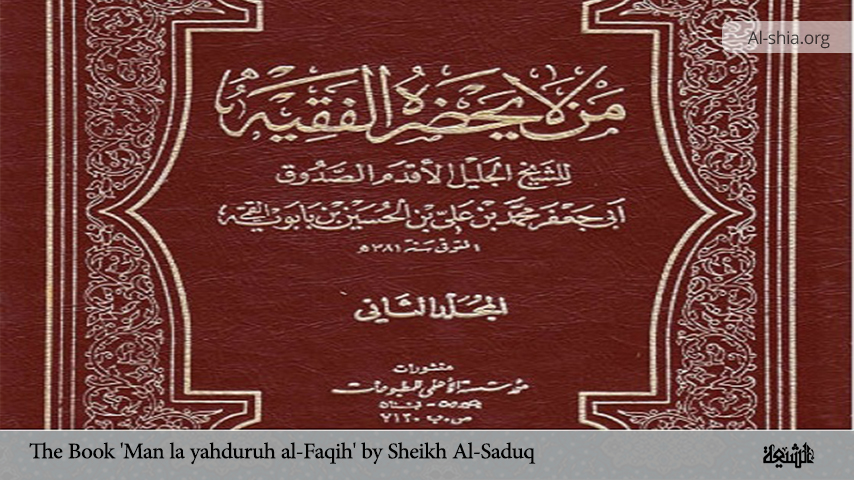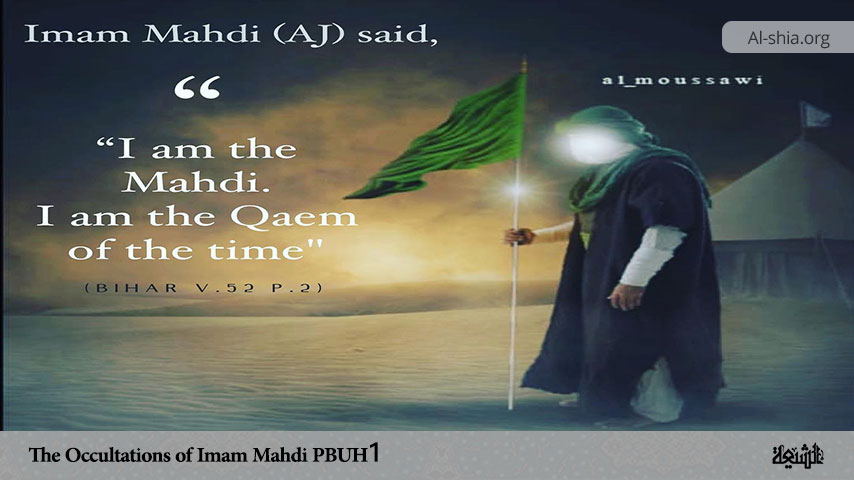After 9/11, anti-Islamic acts and Islamophobia have increased greatly in Western societies. The content analysis of the media and the statements of some Western officials show that they are trying to present the religion of Islam as a threat to the West by highlighting the actions of some extremist groups and with the help of the mass media, they are trying to present Islam as a threat to shape the Western identity to the detriment of Muslims this time. Studying the historical, social, and political roots of opposition to Islam in Europe, the author explains the reasons for the spread in various dimensions.
Introduction
Confronting Muslims and the anti-Islamic approach is not a new phenomenon in the Western world. This issue has historical roots and is a response to the spread of Islam. The history of Islam has witnessed several stages of development towards the West. The early centuries of the Hijrah, the Crusades, the development of the Ottoman Empire, and recent decades have witnessed several distinct stages in the spread of Islam.
The spread of Islam in the early centuries of the Hijrah (eighth century AD) (from Italy and France to Spain) caused a sort of fear of Muslims and Islam in the Christian world. The presence of Muslims in Spain (Andalusia) lasted eight centuries.
In the eleventh to thirteenth centuries AD, the declaration of jihad against Muslims during the Crusades took on new dimensions in anti-Islamic attitude and confronting Muslims.
Ottoman Muslim domination of the Byzantine capital of Byzantium in the 15th century and the control of large parts of Europe (which extended to the siege of the Austrian capital Vienna) brought Orthodox Christians under Muslim control over large areas and bordered Catholic Christianity with Muslims.
During the 19th and 20th centuries, stagnation and passivity in the Islamic world allayed the concerns of anti-Islamic groups. Since then, the West was in a state of aggression, with Muslims retreating and recoiling from strongholds.
After the revival and restoration of the identity of the Islamic world, which began in the late twentieth century, especially with the victory of the Islamic Revolution in Iran, the anti-Islamic feeling and confrontation with Muslims in the West gradually began to take on new dimensions.
The beginning of the 21st century coincided with 9/11. This incident and its consequences spread anti-Islamic views and Islamophobia in the Western world. The events of September 11, 2001, the Madrid train station explosion in March 2004 and the bomb explosion of the London Underground station in 2005 were quickly attributed to Muslims and were presented as a symbol of Muslim behavior and culture.
The wave of anti-Islamic currents in Western societies, like other xenophobic and racist currents, took on the color and smell of violence. Numerous incidents took place in American society and European societies, the victims of which were Muslims, especially those who followed Islamic appearances and rituals. During this period, and especially in the days following the events mentioned, hundreds of criminal acts were committed against Muslims, mosques, and possibly belonging to Muslims.
These acts of violence in some cases even led to the killing of Muslims in these communities. Such anti-Islamic sentiments and actions were not limited to the communities. These issues have been reflected in the speeches and stands of political officials and religious leaders and films, books, and the press of these communities.
Opposition to Islam through an attack on the integrity of Islam as the main problem of the world and the introduction of Islam as extremism, today has a serious and influential presence in Western societies and even the media influencing world public opinion. From this perspective, Muslims are the main culprits in all the conflicts in which Muslims are involved.
It is noteworthy that while anti-Jewish views are presented as anti-Semitic, anti-Islamic views are called Islamophobia, which in this term, problems are attributed to Islam and these appellations are considered a kind of value connotation.
The roots of Islamophobia in Europe
Explaining how he interprets Eastern concepts (including Islam and Muslims), Edward Said states that the concept of Orientalism arose as a result of the spread of imperialism. Orientalist activity has been formed at the same time as the domination of imperialism over large parts of the Islamic world.
According to this idea, the West, instead of trying to understand and discover the East, invented and made the East. The West’s representation of the East is based not on the reality of modern Eastern societies but on textual and mental interpretations. In fact, this East is the product of Orientalism.
Colonial and imperialist institutions must be examined historically in power-knowledge relations. Orientalism is a tool for establishing and strengthening Western identity. Orientalist accounts of the East complete and reinforce the foundations of the West.
The West needs the enemy to establish itself and strengthen its identity. Strengthening “us” depends on creating others and drawing tangible lines of distinction with others. Communism and the Soviet Union once played this role for the West, and after the collapse of the Soviet Union, the Islamic world must play this role.
In this framework, the Islamic world should be introduced and accepted as ossified, irrational, dogmatic, backward, and violent. The mass media and the elites in a concerted effort constantly portray Islam in negative terms and with undesirable elements and have been able to shape the views of others, especially Western societies.
Orientalism has given the East a stereotype and with fictional stories, by creating a scenario, it has made it possible to introduce more Western identity.
These views leave the East forever behind and see it as a threat to Western values. Muslims cannot think positively and they cannot be brought to the right path. Thus, the East (Muslims) is a terrible phenomenon that must be controlled. Most people in Western societies do not have much knowledge about Islam and Muslims, and this lack of awareness paves the way for the acceptance of dominant accounts.
Therefore, the anti-Islamic view presents Islam with the following components:
- Islam is an old and savage religion
- It is separate from other religions
- It is inflexible and static
- It is violent and it supports aggression and terrorism
- Islam is a political ideology, so violence against Muslims is natural and logical
This idea is very popular in the West today, and the war against Muslims has become a decisive part of Western identity today. It is the Western identity against Muslims that rediscovers its components. The history of the genesis of Western identity shows that this identity was formed in many cases in reflection on the enemy.
Nationalist identity developed against Nazi nationalism and socialist identity developed against Soviet socialism. Just as in recent cases Western identity has been formed in opposition to the identity of the enemy (and of the same kind), today Christian identity is being formed against Islamic identity. The diagrams in this article show the current perception of Islam and Muslims in Western societies (Europe and the United States).
Types of anti-Islamic executors
Anti-Islam currents and anti-Islamic waves in Western societies can be categorized into different groups as follows:
- Zionist groups;
- Zionist Christians (active Protestant movements in America);
- Catholic cross currents;
- Orthodox ethnic currents opposed to Muslims (such as Serbian extremist currents);
- Racist and riotous groups;
- Political currents;
- Immigrant laymen from Islamic countries;
- Deviant and anti-Islamic ideologies (such as Baha’ism, Marxism, etc.)
Each of the above groups is in conflict with Islam and Muslims for independent and specific reasons and methods. In many cases, they have defined their identity in opposition to Muslims and anti-Islamic approaches and use various methods to oppose them. This wide range justifies their activities for historical, religious, political, or racial reasons.
An example of existing perceptions of European Muslims
| Muslim imagination
|
They want to remain distinct | They have a growing sense of Islamic identity |
| Germany | 88% | 66% |
| Spain | 68% | 47% |
| Netherland | 65% | 60% |
| Britain | 61% | 63% |
| France | 59% | 70% |
| Poland | 42% | 20% |
Concerns about Islamic extremism
| Concerns about extremism in his/her country
|
Partly concerned | Very concerned |
| Germany | 35% | 43% |
| Spain | 43% | 34% |
| Netherland | 32% | 44% |
| Britain | 34% | 36% |
| France | 32% | 41% |
| Poland | 7% | 30% |
An example of existing perceptions of American Muslims
| Case | Disagree | No idea | Agree |
| Muslims do not care about life | 47% | 30% | 47% |
| Muslims teach children hatred | 41% | 33% | 41% |
| Islam teaches violence and hatred | 43% | 30% | 43% |
Reasons for the spread of Islamophobia
Numerous factors have contributed to the spread of anti-Islamic view in the West. Scoping out these factors will help to better discern the causes and forms of Islamophobia. These motives, although, are linked in many cases, they can be divided into five categories:
-
Historical causes and background
Historically, the development of Islam and the establishment of Islamic societies and governments in many areas confronted them with the Western world and Christian governments. The Muslims ruled Andalusia for 800 years. During the Crusades, Christian communities fought Muslims in a nationwide religious jihad in a war that lasted nearly two centuries.
In the 15th and 17th centuries, Muslims advanced from Russia to the heart of Eastern Europe and conquered these areas. In the 16th to 20th centuries, the Ottoman Empire conquered Byzantium, the religious center of Eastern Christianity, controlled numerous Christian communities, and became neighbors of the Christian communities of Central Europe. The collection of these historical events has provided the ground for exploitation by anti-Islamic currents.
The prevailing idea of the Crusades has always been Islam (and Muslims) as its enemy. The idea of a holy war with Islam has always existed in this approach. In some of these societies, groups have set the basis of their identity and the roots of their account of national identity against Muslims and raised their national and cultural myths and heroes from leaders and the slain against Muslims.
-
Demographic reasons and issues
Another important factor that is considered as a reason for the spread of Islamophobia in Western societies is the growth of the Muslim population there. The migration of Muslims to these societies and the formation of distinct communities within Western societies, as well as the tendency of non-Muslims in those areas to Islam and the growth of more Muslims than other inhabitants have led to the creation and development of Muslim communities in Western societies. There are currently about 15 million Muslims living in Europe, which could increase to 50 million in the next 30 years. One report puts the birth rate of French Muslim immigrants at three times that of French nationals. In most Western societies, Muslims have become the largest religious minority, with an increasing and a significant ratio of the population, and gradually gain access to the legislature and even the executive of these countries. The emergence and rise of this growing minority face the reaction of the majority groups.
-
Political factors of the West
In addition to historical issues, the macro-political factor of the Western world, especially the United States, must be considered as well. During the years after World War II, the West and the United States always justified and organized their policies in the face of communism and the Red Devil. The collapse of the Soviet Union eliminated the threat posed by policies that justified the behavior and performance of Western societies, and this could create new problems in these societies.
Finding a threat that justifies the behavior of the leaders of societies like the United States was one of the concerns of the intrusive and aggressive spectrum. Threats such as China and Russia, however, intermittent in the 1990s, did not provide the necessary capabilities and conditions. 9/11 quickly filled the gap with the threat of Islamic terrorism, and Western societies rallied around this new growing threat. Thus, the threat of Islam and Muslims was presented as the main threat to Western security, culture, and civilization, and was exploited by the media and societies producing the culture and behavior of Western societies, and replaced the threat of communism and the Soviet devil as a dangerous enemy. The Zionists were one of the main beneficiaries of this process. They were able to turn the anti-Semitic waves in Western societies into anti-Islamic currents and put themselves on a safe margin. The Zionist regime also made the best use of this space in the brutal repression of the Palestinians, and by adding fuel to the flame of Islamophobia justified its inhumane actions in Western societies.
-
Islamic awakening and revival of Muslim identity
Another factor that is significant in this context is the process of reviving identity in Islamic societies. Islamic societies, after being in a state of passivity during the decades of previous centuries and retreating step by step due to successive failures, had a prevailing interpretation in Islamic societies that in the process of globalization, the principles and manifestations of self-identity should be ceased. Since the last decades of the twentieth century, they gradually returned to their identity foundations and found the solution to success in reviving Islamic identity. The victory of the Islamic Revolution of Iran was one of the first manifestations of this process in the Islamic world. Today, the rise of identity has found many manifestations throughout the Islamic world and is quite clear and tangible. This rise in identity has led Muslims to stand up against historical oppression, repression and humiliation.
Resistance to occupation and aggression is widespread in Palestine, Iraq, and other Islamic societies. The definition of self-identity based on resistance to the imposition of values and interests of foreigners and finding an active spirit and face in defense of self-interest and identity has been widely reflected in other societies, especially in Western societies. The fear of this feeling of resistance and oppression in the leaders of the developmental societies causes them to create and develop the spirit of struggle and confrontation with Muslims and anti-Islamic attitude in their societies. Also, defining a population based on self-identity can cause reactions in bilateral groups, and they also put their identity in confrontation with the first group. The illusion is gradually spreading in Europe that Europe is divided into two nations:
- Secular decreasing Europeans, rich and weak.
- Religious increasing Muslims, young, poor, powerful.
According to this idea, the people of Europe are declining, growing in fear, and experiencing demographic frustration. This idea produces a kind of fear of Muslims and their growing power. This view depicts Muslims at war with the West. Accordingly, the war against Islam and Muslims is concentrated on three fronts:
- Central Front (Middle East).
- Eastern Front (Southeast Asia: Afghanistan, Pakistan and Indonesia)
- Western Front (Europe and America): This war with Muslim immigrants is concentrated in Western countries.
Scenes of resistance in countries such as Palestine and Iraq, regardless of the realities of the occupation and the right of Muslims to defend their land, are propagated as the crime of Muslims in world public opinion. “The United States is at war today, a war with a distorted ideology,” the United States said at the beginning of the National Security Strategy document released in 2006 by the White House and the National Security Council.
-
The spread of violence and rigidity in the name of Islam
Violent acts such as bombings, murders, and crimes committed in the name of Islam in all parts of the world, which cause hatred and grudge against Muslims, are also factors in the development of Islamophobia and are exploited by opportunistic currents. The utilization of propaganda of crimes committed by deviant and suspicious groups in areas such as Afghanistan and Iraq, the magnification and plot of such disgusting scenes has become a constant program, and these annoying scenes are constantly introduced as Islam and Muslims in the international media. The media also try to portray violent faces of Muslims who kill others and are happy to see non-Muslims die.
Conclusion
Anti-Islamic movements are spreading in the Western world with different motives and forms. They skillfully use the media and tools that influence public opinion and play an effective role in forming the imagination of the masses and even the elites of societies. The actions taken in the name of Islam bring the most benefit to this anti-Islamic current. The currents of resistance and counter-occupation are also introduced in the account of anti-Islamic currents as terrorism, violence, and rigidity.
On the other hand, the reality of reviving the identity of the Islamic world after decades of passivity and growing power of Muslims around the world, especially in strategic areas of the world, as well as the widespread development of the presence and role of Muslims in Western societies, has added to motivations and reasons. Accordingly, and given the growing trend of power, the presence and role of Muslims, and the wounding of anti-Islamic Zionist currents and the hegemons and rulers of the forming tools of public opinion in Western societies, it seems that the future is still predictable. We will see the presence and development of anti-Islamic currents, especially in Western countries.
Trying to get the representation of Islam and Muslims out of the hands of extremist and deviant currents and presenting the correct Islamic image can be one of the main efforts to confront the currents pursued by or in the name of extremist currents on both sides. Muslims are in the process of reviving their identity and regaining power, and they are trying to restore their greatness and glory. This revival of identity has in many cases manifested itself in the form of resistance to the occupation, but the deviant act of resorting to violent anti-Islamic actions against fellow believers and other foreigners can seriously disrupt this process.
The extremist currents are trying to dominate these powerful waves of reviving the identity and power of the Muslims and diverting them from their original path. Muslims around the world strongly oppose the occupation and the actions of the occupiers and support the currents of resistance. Deviant groups try to exploit these feelings and divert these anti-occupation waves, turn them into violence, and direct this blind violence at Muslims. Developments in Iraq, Palestine, Lebanon, and elsewhere indicate that extremist movements such as Salafism, in the name of nationalism or even Islam, are directing anti-occupation waves to seek revenge against other Muslims. Creating a rift in own ranks provides the necessary tools and excuses for anti-Islamic currents. This deviant current that is trying to dominate the current of reviving Islamic identity is one of the serious dangers that threaten the current of Islamic awakening.

















